Top dressing of cherries and cherries in the fall (after fruiting and harvesting): suitable autumn fertilizers
You are looking for the right fertilizer that you want to feed (= thank) your cherries after they have produced a bountiful harvest, right? Wondering what can be most effective for your cherry trees in fall?
Next, you will learn what is the best way to feed cherries and cherries in the fall after harvesting (more precisely, in the summer, but such feeding is still called "autumn").
Advice! Cherries can and should be fertilized similarly to cherries.
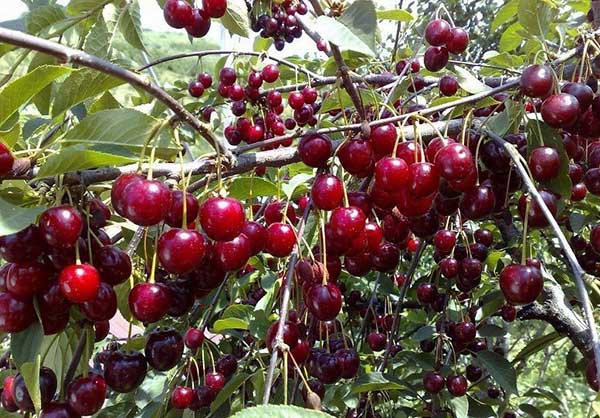
Content
Why feed cherries after fruiting
So, you must understand that after abundant fruiting, all fruit trees and berry bushes need to be replenished in order to successfully lay flower buds, which means give a good harvest next year. Also, timely autumn feeding will help strengthen the root system and successfully leave trees (especially young ones) for the winter.
When, how and what to feed cherries after fruiting and in autumn
Terms of feeding
As you know, cherries, like sweet cherries, are quite early crops (compared to apples and pears), which means that autumn feeding is actually carried out in the summer, around July-August.
Your main guideline when choosing the moment to feed is harvesting. The berries are ripe, you have collected them and eaten them safely - it's time to thank your trees well.
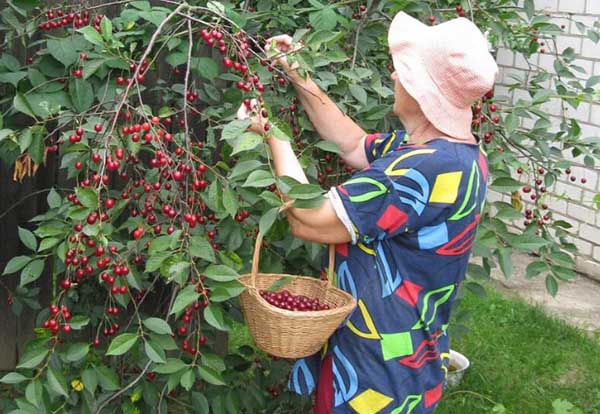
By the way! If you do not have time to do this in the summer, then it is quite possible in the fall (in September), but be sure to at least 3-4 weeks before the start of frost, so that the plant has time to absorb the required macro- and microelements, which are absorbed only when the soil still warm.
Phosphorus and potassium
Cherries during this period require fertilizers containing an increased amountpotassium and phosphorus.
And here nitrogen fertilizers already more not required (they are brought in in spring or in the first half of summer, but not after harvest).
Autumn fertilizers = phosphate-potassium fertilizers.
Potash mineral fertilizers:
- Potassium sulfate (potassium sulfate) - 20-30 grams per 10 liters of water or 1 square meter of the trunk circle.
It is the most popular and concentrated potash fertilizer.
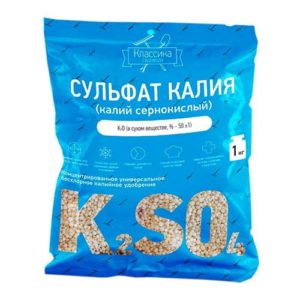
- Kalimagnesia (potassium + magnesium).
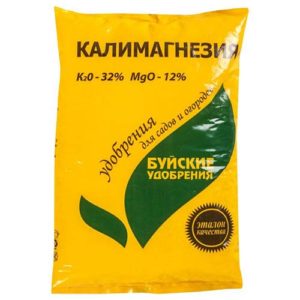
- Potassium salt (chloride fertilizer).
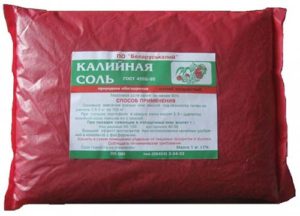
- Potassium chloride (potassium chloride).
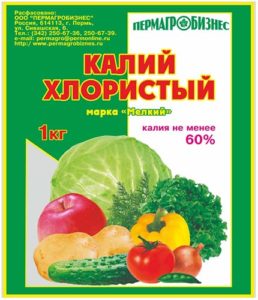
Worth knowing! In the fall (including after fruiting), chloride potash fertilizers, because next year, a minimum amount of chlorine will remain in the soil (it will be washed out). Another thing is that in spring and summer their use is very undesirable.
If you are a supporter of organic farming, i.e. prefer to use natural remedies, then wood ash (200 grams per 10 liters) - this is your best potash fertilizer (which also contains a little phosphorus and other trace elements).
Phosphoric mineral fertilizers:
- Superphosphate (30-40 grams per 10 liters or square meter of the trunk circle).
- Double superphosphate (15-20 grams).
Superphosphate can normally dissolve only in boiling water, and this will take about 12 hours (for example, you can leave it overnight).
Advice! More details about the correct use of superphosphate read in this material.
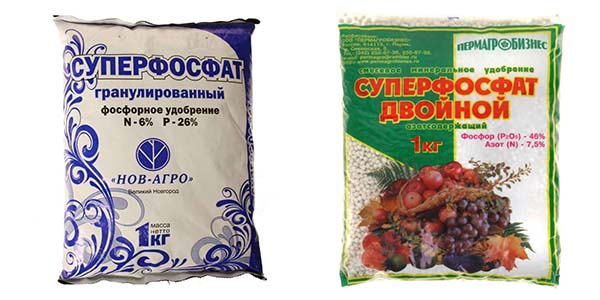
- Ammophos.
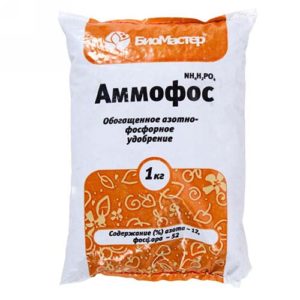
Important! Phosphate fertilizers for a very long time they come to the roots of the plants, especially if you bring them dry (for digging). Therefore, they are always added in advance, i.e. in the fall, so that the earth has time to absorb them by spring.
If you want them to start acting immediately, then you need to prepare a "quick" solution, for example, "superphosphate extract» .
For better absorption of phosphorus, you can also add to the superphosphate solution vinegar.
Advice! Read more about preparing an easily digestible superphosphate solution. in this paragraph.
If you prefer to use natural remedies, i.e. lead organic farmingthen your phosphate fertilizer is bone flour (200-400 grams per square meter).
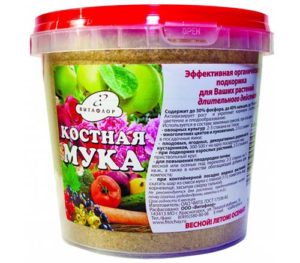
Complex potash-phosphorus fertilizers:
- Potassium monophosphate (50% phosphorus and 33% potassium).
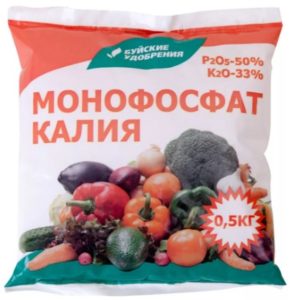
Potassium monophosphate is the most effective phosphorus-potassium fertilizer, because acts and is absorbed instantly (as opposed to superphosphate or even more bone meal).
However, its price is appropriate (it is quite expensive).
- Diammofoska (10% nitrogen, 26% phosphorus and potassium each).
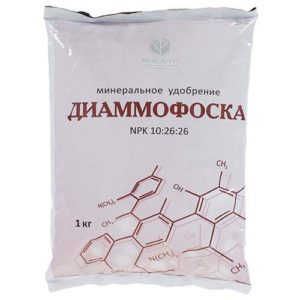
- Special ready-made "Autumn" fertilizers (or marked "Autumn").
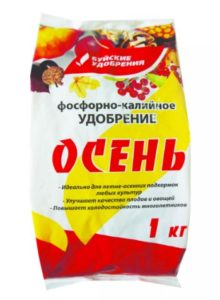
Calcium
If the soil in your area is slightly acidic or even more acidic (pH below 5.5), then for normal fruit setting (seed formation) and regular fruiting you should periodically feed your cherries with calcium. More specifically, you need to maintain the acidity of your soil at a favorable level for the culture (optimal - pH not lower than 6, but not higher than 7). The fact is that calcium is practically not absorbed by the plant (it becomes inaccessible for it) if the soil is excessively acidic.
Note! If your cherry blossoms beautifully, but as a result, very few fruits are formed (they are not even tied), then it is likely that the plant does not have enough calcium (another option, the cause may be poor pollination).
As for the timing, as a rule, calcium supplementation is done a month after potassium-phosphorus, i.e. in August-September.
An instant and easily digestible calcium supplement for cherries can be prepared as follows (recipe from Procvetok):
- Take 150-200 grams chalk, lime or dolomite flour;
- pour 1 liter of 9% table vinegar (you need to pour it slowly, controlling the chemical reaction);
- add water, bringing the total volume to 10 liters;
- to feed under the root;
By the way! This solution can be used for foliar feeding, i.e. spray on the leaves. But in this case, the solution must be made 3-4 times less concentrated, i.e. diluted in 30-40 liters of water. Or initially take 50-70 grams of a deoxidizer, 250-300 ml of vinegar per 10 liters of water.
- then again pour the tree abundantly with plain water (so that the top dressing just hits the roots).
Rules for effective feeding
Concerningforms of feeding, since the root system of a cherry (like any other fruit tree) lies deep enough, it is optimal to cookliquid solutions... In other words, you need to apply liquid root feeding.
Wherein fertilizer needs to be applied not under the barrel, but by projection (circumference) of the crown, i.e. necessarily stepping back from the tree by 50-70 cm or more... It is at this distance that the roots of the tree are located, which you want to feed.
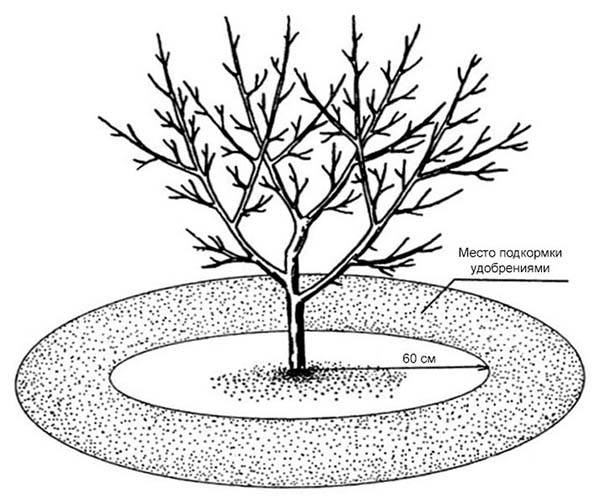
Idea! In general, you can even dig holes and pour the solutions into them, and then cover them with earth.
However, you can also hold and dry root dressing.
Advice! In this case, it is most rational to bury fertilizers in the soil in small doses (in holes), or simply scatter them again along the projection (circumference) of the crown, and then dig up 1/2 a shovel bayonet (10-15 centimeters) from the ground.
Note! Spreading dry fertilizers around the trunk circle is ineffective!
A few more tips for proper feeding:
- Before applying liquid fertilizing, the tree should be spilled abundantly with plain water.
Note! In general, it is very advisable to spill it with water after feeding, so that the solution is guaranteed to get to the roots (especially for old trees).
- You can either mix the potassium sulfate and superphosphate solutions in one bucket, or feed them separately.
Features of feeding young and old cherry trees
It is obvious that still young and even more so not yet fruiting trees, as well as adults, already fruiting trees, as well as old trees need different fertilizing from each other, more precisely in their different concentrations (the larger the tree, the more it needs nutrition) ...
So, under each tree, depending on its age, it is necessary to pour out a certain number of liters (buckets) of solution:
- 2-3 year old tree - 1-2 buckets;
Interesting! Many gardeners do not advise at all to feed cherries and any fruit trees until they begin to bear fruit, especially if you originally planted them in fertile soil (adding a supply of organic and mineral fertilizers to it).
- 4-6 year olds - 2-3 buckets;
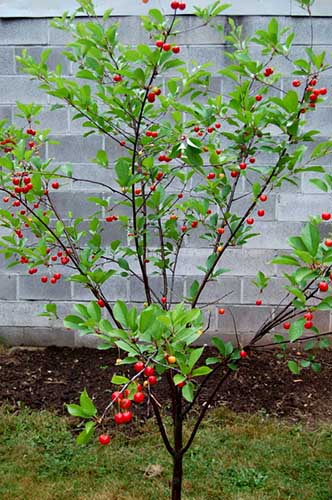
Example! To feed a 6-year-old cherry, which has given you a bountiful harvest this season, you will need 3 buckets of phosphate-potassium fertilizers. 1 bucket = 30-40 grams of superphosphate + 20-30 grams of potassium sulfate.
Fertilizers can be mixed, but if you don't want to, then in this case you will have to do double work, i.e. 3 buckets of superphosphate solution and 3 buckets of potassium sulfate solution.
- 7-10 years old - 3-4 buckets;
- over 10 years old - 5 or more buckets.
Note! The frequency of fertilizing is as follows: young trees - once every 1-2 years, older trees (over 10 years old) - once every 3 years.
Thank your cherry trees for a bountiful harvest of phosphorus-potassium fertilizers!

